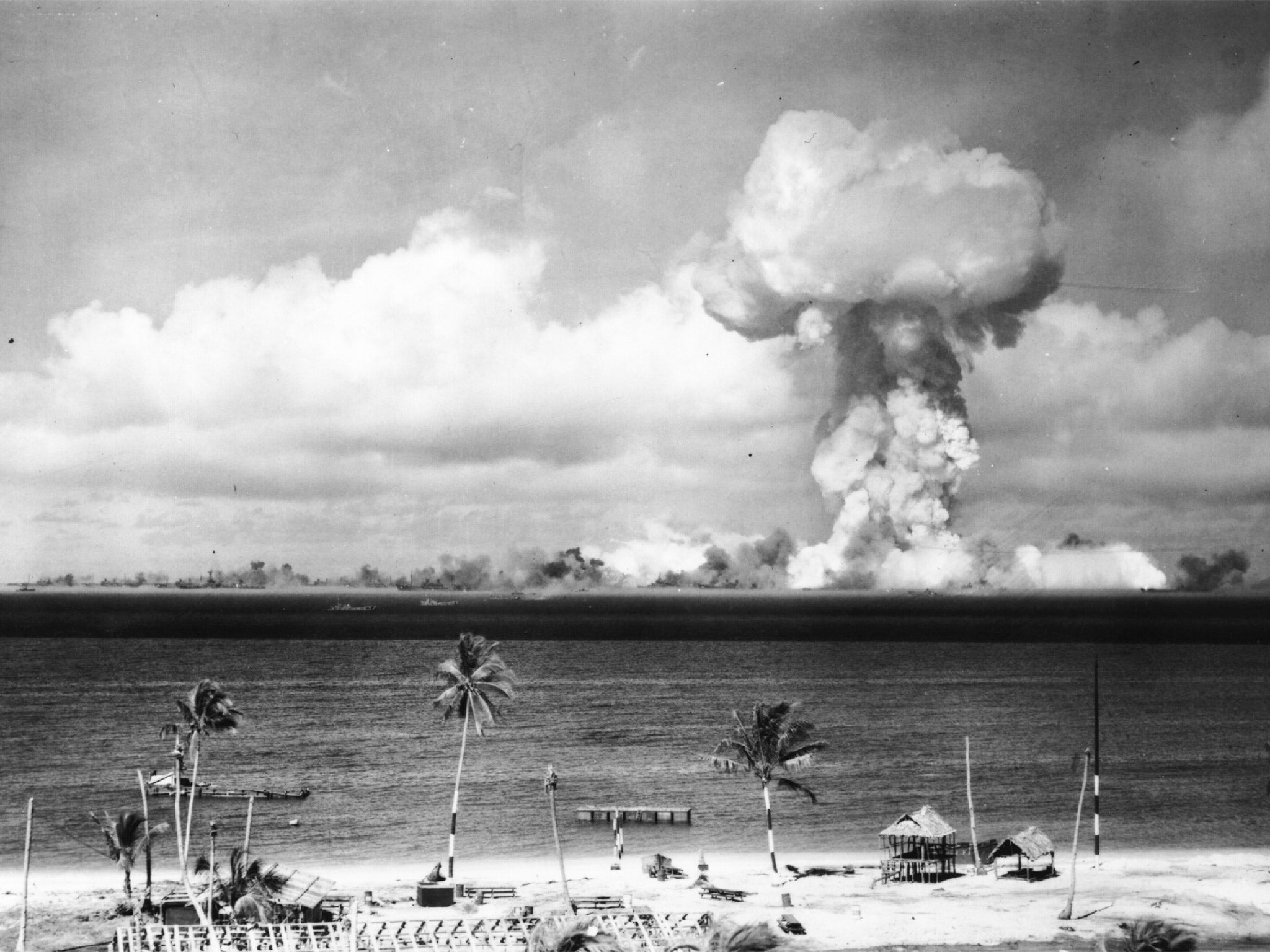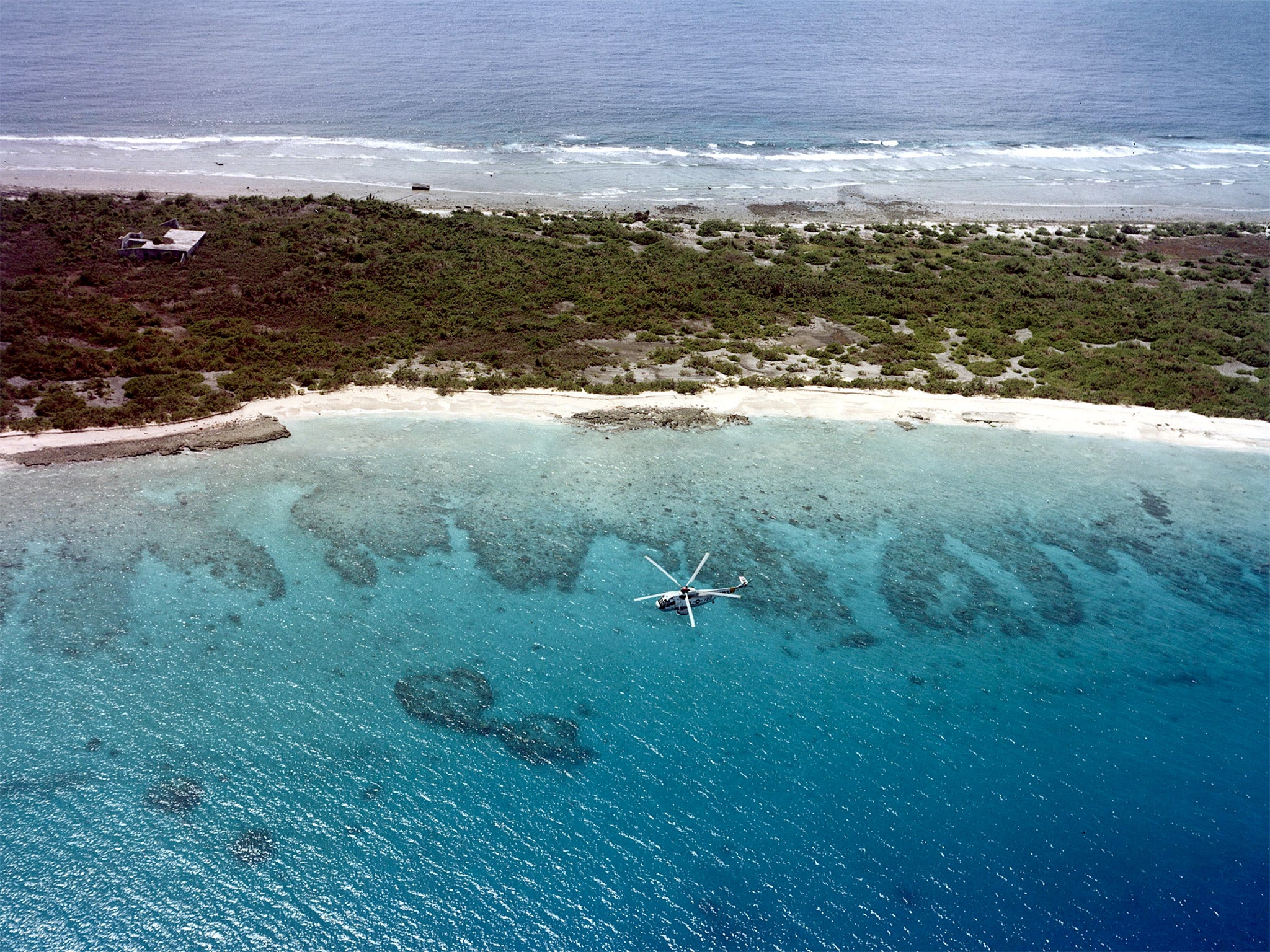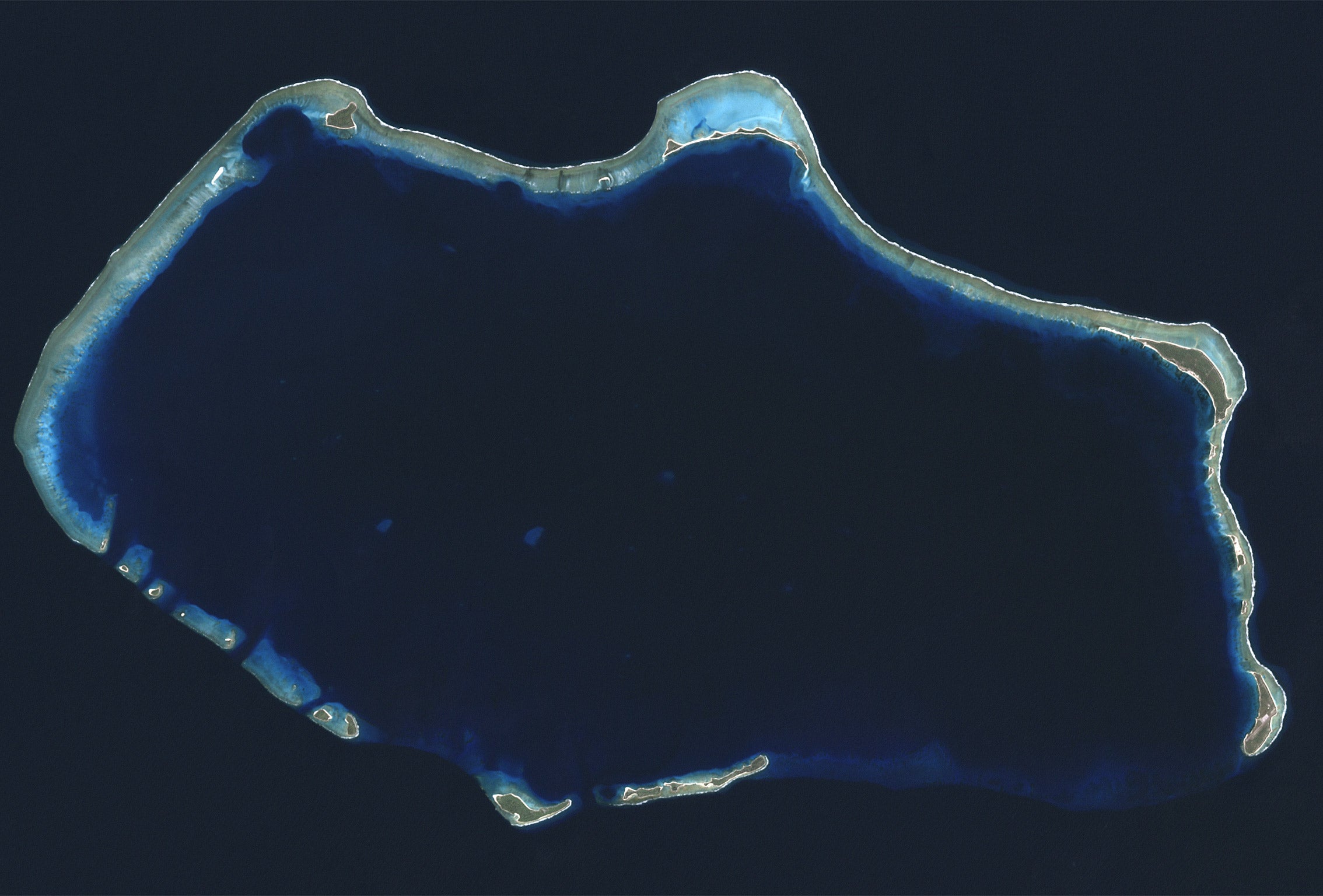Bikini Atoll islanders forced into exile after nuclear tests now find new homes under threat from climate change
Rising seas in other parts of the Marshall Islands mean the last hope for homeless citizens is to move to the US

Your support helps us to tell the story
From reproductive rights to climate change to Big Tech, The Independent is on the ground when the story is developing. Whether it's investigating the financials of Elon Musk's pro-Trump PAC or producing our latest documentary, 'The A Word', which shines a light on the American women fighting for reproductive rights, we know how important it is to parse out the facts from the messaging.
At such a critical moment in US history, we need reporters on the ground. Your donation allows us to keep sending journalists to speak to both sides of the story.
The Independent is trusted by Americans across the entire political spectrum. And unlike many other quality news outlets, we choose not to lock Americans out of our reporting and analysis with paywalls. We believe quality journalism should be available to everyone, paid for by those who can afford it.
Your support makes all the difference.On the morning of 1 July 1946, a second sun rose over the remote Pacific island chain of Bikini Atoll. The world’s fourth atomic bomb had just been detonated over the area with an “unearthly brilliance that petrified observers”.
A hundred miles away, from a ship just off the shore of tiny Rongerik Atoll, Bikini’s former residents watched a mushroom cloud form over the place that had been their home. Now it was a bomb site. Uninhabitable. The Bikini islanders had agreed to a series of nuclear tests on their islands believing they would be able to return as soon as the experiments ended.
Instead, they began a nomadic existence that would see them starve on atolls too small and sparse to sustain them, and sicken from lingering radiation on others. The tiny community would be relocated five times in as many decades, before settling elsewhere in the Marshall Islands. Now, they say, the rising seas and brutal storms brought on by climate change have rendered their new homes uninhabitable.
On Wednesday, the Marshallese Foreign Minister, Tony de Brum, was due to meet members of the US Congress to ask for a change in the terms of the fund that was set up to help Bikinian people resettle. Currently, the fund can only be used to help them buy property in the Marshall Islands. But the islanders are giving up on the Pacific entirely. They want to come to America.
“Kili [is] uninhabitable because of climate change,” Mr de Brum said, referring to the tiny island where about 700 people now live.
It’s getting to the point where people are tired of having water in their living rooms and trying to deal with the waves and the water coming over the island
The Bikini islanders moved to Kili in 1948, after it was clear they would starve if they remained on Rongerik. The new spot was attractive because it was public land, meaning that the Bikini people could establish their own community there, but it had little else to offer.

The lack of a natural lagoon effectively eliminated the islanders’ traditional fishing culture. Space for farming was sparse, so residents had to rely on imports to supplement what little they could grow. Rough seas could stop shipments for months, and the threat of starvation was a constant.
In the late 1960s, US officials announced that most of the effects of its nuclear detonations had worn off, and some Bikini islanders opted to return to the atoll. But subsequent tests found alarming levels of radiation. The islanders living in Bikini Atoll returned to Kili.
“The island has been inundated by waves, and not just a little bit,” Bikini liaison officer Jack Niedenthal said in the summer. “It’s getting to the point where people are tired of having water in their living rooms and trying to deal with the waves and the water coming over the island.”
Kili experienced widespread flooding in 2011 and this year. Sea salt is seeping into the ground water, rendering it undrinkable and unusable for agriculture. The island’s runway flooded earlier this year, cutting residents off from the world and from the imported supplies they depend on for food. Conditions are just as bad in other parts of the Marshall Islands, where other Bikinians live.
“Countries that are elevated have the option of a managed retreat, but not here – our front line is our last line of defence,” Ywao Elanzo, the country’s acting director of the Office of Environmental Planning and Policy Co-ordination, told Al Jazeera. If predictions for rising sea levels prove true, these islands will be inundated. The majority of homes on Kili, for example, are built less than four metres above sea level.

Last week, the US Department of the Interior recommended that the terms of the fund be altered to allow Bikini islanders to resettle in the US. “This is an appropriate course of action for the US to take regarding the welfare and livelihood of the Bikinian people, given the deteriorating conditions on Kili and Ejit islands in the Marshall Islands, with crowding, diminishing resources, and increased frequency of flooding,” said Esther Kia’aina, of the Office of Insular Affairs.
Mr Niedenthal said the US has a moral obligation to help the community it displaced.
The last islanders who left Bikini Atoll still recite a promise made by an American officer there, said Mr Niedenthal. “[He] said: ‘Don’t you worry. It doesn’t matter if you’re adrift on a raft at sea or on a sand bar, you will be like the children of America. We are going to take care of you.’”
© The Washington Post
Join our commenting forum
Join thought-provoking conversations, follow other Independent readers and see their replies
Comments